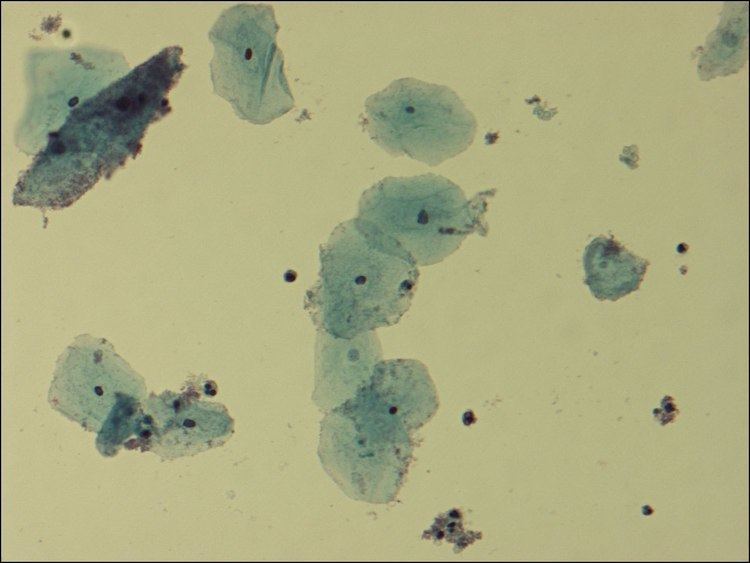Scientific name Gardnerella vaginalis Rank Species | Class Actinobacteria Genus Gardnerella Phylum Actinobacteria Order Bifidobacteriales | |
 | ||
Similar Bacteria, Lactobacillus, Neisseria, Haemophilus, Atopobium | ||
Gardnerella vaginalis
Gardnerella is a genus of Gram-variable-staining facultative anaerobic bacteria of which G. vaginalis is the only species. The organisms are small (1.0–1.5 µm in diameter) nonspore-forming, nonmotile coccobacilli.
Contents
- Gardnerella vaginalis
- Gardnerella vaginalis bacteriologia
- Clinical significance
- Treatment
- Symptoms
- Eponym
- References
Once classified as Haemophilus vaginalis and afterwards as Corynebacterium vaginalis, G. vaginalis grows as small, circular, convex, gray colonies on chocolate agar; it also grows on HBT agar. A selective medium for G. vaginalis is colistin-oxolinic acid blood agar.
Gardnerella vaginalis bacteriologia
Clinical significance
G. vaginalis is a facultatively anaerobic Gram-variable rod that is involved, together with many other bacteria, mostly anaerobic, in bacterial vaginosis in some women as a result of a disruption in the normal vaginal microflora. The resident facultative anaerobic Lactobacillus population in the vagina is responsible for the acidic environment. Once the anaerobes have supplanted the normal vaginal bacteria, prescription antibiotics with anaerobic coverage may have to be given to re-establish the equilibrium of the ecosystem and allow the balance to be restored. G. vaginalis is not considered the cause of the bacterial vaginosis, but a signal organism of the altered microbial ecology associated with overgrowth of many bacterial species.
While typically isolated in genital cultures, it may also be detected in other samples from blood, urine, and the pharynx. Although G. vaginalis is a major species present in bacterial vaginosis, it can also be isolated from women without any signs or symptoms of infection.
It has a Gram-positive cell wall, but, because the cell wall is so thin, it can appear either Gram-positive or Gram-negative under the microscope. It is associated microscopically with clue cells, which are epithelial cells covered in bacteria.
G. vaginalis produces a pore-forming toxin, vaginolysin, which affects only human cells.
Protease and sialidase enzyme activities frequently accompany G. vaginalis.
Treatment
Methods of antibiotic treatment include metronidazole and clindamycin, in both oral and vaginal gel/cream forms.
The effectiveness of treating bacterial vaginosis with antibiotics is well documented.
Symptoms
G. vaginalis is the predominant cause of bacterial vaginosis, whose symptoms may be asymptomatic, but can include vaginal discharge, vaginal irritation, and a "fish-like" odor. In the amine whiff test, 10% KOH is added to the discharge; a positive result is indicated if a fishy smell is produced. This and other tests can be used to distinguish between vaginal symptoms related to G. vaginalis and those caused by other organisms, such as Trichomonas and Candida albicans, which are similar and may require different treatment. Trichomonas vaginalis and G. vaginalis have similar clinical presentations and can cause a frothy gray or yellow-green vaginal discharge, pruritus, and produce a positive "whiff-test". The two can be distinguished using a wet-mount slide, where a swab of the vaginal epithelium is diluted and then placed onto a slide for observation under a microscope. Gardnerella reveals a classic "clue cell" under the microscope, showing bacteria adhering to the surface of squamous epithelial cells. Both conditions are treated with metronidazole or clindamycin.
Eponym
It is named after Hermann L. Gardner (1918–2005), an American bacteriologist who discovered it in 1955.
